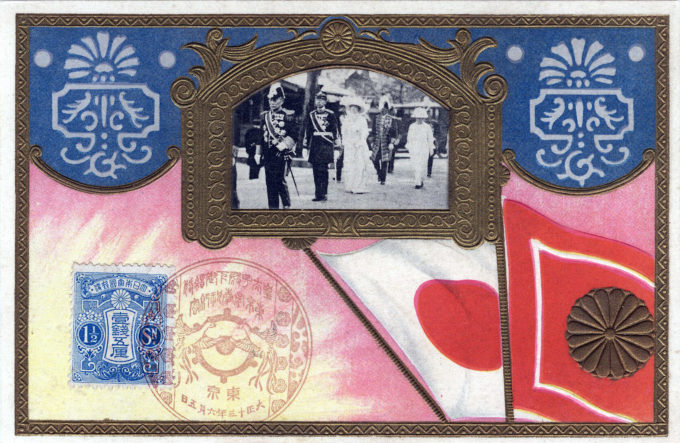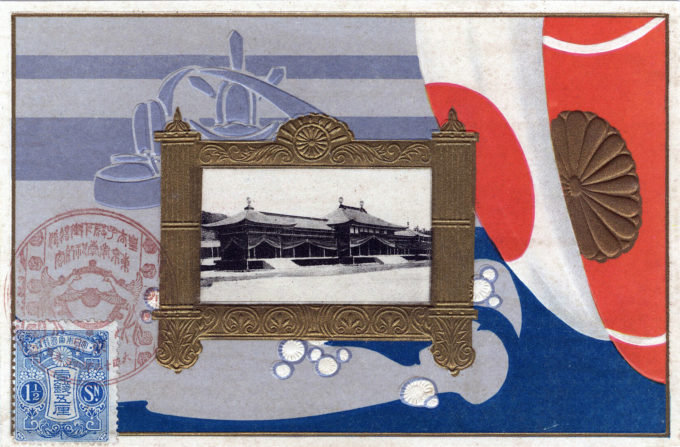See also:
Royal Carriage Departure, Tokyo Station, 1924.
“The wedding of Hirohito in 1924 also became an important celebratory event. Film studios such as Nikkatsu and Shochiku as well as newspapers such as Osaka Asahi and Osaka Mainichi competed to cover it, joined by foreign news cameramen. In particular, there was a scandal in early 1921 when it was suggested by one of the oligarchs (genro), Yamagata Aritomo, that Nagako, the crown-princess-to-be, should withdraw from the engagement.
“Though the engagement had been officially announced in 1918, it had just been discovered that Nagako might carry into the imperial lineage potential hereditary color blindness, which posed a serious problem … Politicians, imperial and aristocratic families, and the general public were split over whether it was legitimate to breach the promise, and eventually the engagement was maintained.
“This scandal invoked the romantic imagination of newspaper readers, naturally enhancing the celebration of the marriage, as if the readers were watching the happy ending of a film story.”
– Promiscuous Media: Film and Visual Culture in Imperial Japan, 1926-1945, by Hikari Hori, 2018
“Born March 6, 1903, Nagako [the future Empress Kojun] was the daughter of Imperial Prince Kuniyoshi Kuni. She was brought up in Tokyo, attending the elite Peer’s School for Girls.
“At age 15, Princess Nagako was one of several prospective brides selected for Hirohito, then crown prince.
“He chose her over the objections of some powerful court officials, including the Fujiwara family that traditionally supplied imperial brides. They tried to stop the engagement by producing medical records of color blindness in her mother’s family, but doctors disputed the claims and Hirohito made it clear he already had decided.
“Once betrothed, the couple met only nine times during their six-year engagement. The wedding, set for 1923, was postponed after the Great Kanto Earthquake in September left much of the capital burned and in ruins. They were wed in an elaborate ceremony on Jan. 26, 1924.
“On Christmas Day in 1926, Nagako became empress of Japan when Hirohito succeeded to the legendary Chrysanthemum Throne on the death of his father, the Taisho emperor.”
– Wikipedia




Pingback: Akasaka Detached Palace, c. 1920-1950. | Old TokyoOld Tokyo
Pingback: Royal Carriage Departure, Tokyo Station, 1924. | Old Tokyo